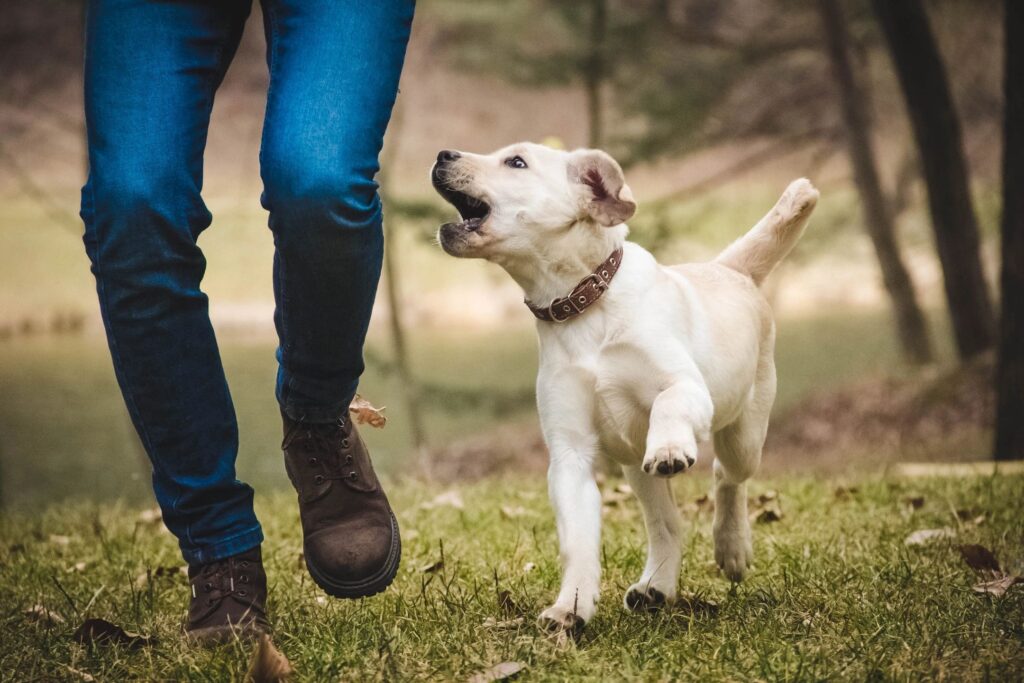How to Change Unwanted Behaviors

A lot of people come to dog training classes or private lessons to help learn how to stop unwanted behavior. I wanted to write this blog to help you understand how we address behavior change, specifically for unwanted behaviors. There are four ways to address unwanted behaviors that I will go over for you in this blog.
1. Punishment
2. Train an incompatible behavior
3. Ignore It
4. Manage it
Let’s Discuss
The first is punishment. Because our society is very punishment based, this tends to be the go-to for people. However, the research suggests “that training based on punishments or confrontations are more likely to lead to fear, avoidance, and increased aggression. Dogs trained with rewards have fewer behavioral problems and are less fearful.” (Merck Veterinary Manual, March 2018)
I do not use physical corrections or intimidating tactics for training dogs because you don’t have to. The other techniques that we use, based in positive reinforcement, work much better for long term success, and without the potential fallout that aversive training can cause. Additionally, using aversive measures only causes those unwanted behaviors to be suppressed, not cause actual behavior change.
The second is training an incompatible behavior. This is my go out for addressing most unwanted behaviors. In order to make behaviors go away that we do not like, we should think about what we would prefer that our dog does instead. For example, if our dog jumps on people at the door, think about what you would like to them to do instead. I have trained dogs to sit when people approach and to go grab a toy to present to the guest in lieu of jumping.
When we train an incompatible behavior, it is important to make that behavior more reinforcing than the previous, undesirable one. To do this we must make sure we are spending adequate time training and rewarding those behaviors. Puppies who bite to solicit play are a good example of this. If biting is what gets their human off the couch and paying attention to them, then that behavior is very reinforcing and will likely be their “go-to” to get your attention. However, if we teach our dog to sit or offer eye contact in order to communicate that they want attention, they will start to offer that instead.
The third method is to ignore the behavior. Sometimes this can work. Sometimes it does not. I like to use ignoring, or removing my attention, in conjunction with training a new behavior. Ignoring is a form of negative punishment (taking something away in order to decrease the likelihood that a behavior will happen again). As I mentioned above, behaviors that are reinforced will continue, so we should remove that reinforcement while also rewarding the newly trained behavior.
What is important to understand about ignoring behaviors is that your dog will go through what is called an extinction burst. This means, just before the behavior disappears it will become worse. Think about a child who is calling for you. It starts as, “mom.” Then moves to, “mom, mommy, mama.” Before turning into, “MOOOOMMMM!” Your dog will increase the level of this undesirable behavior to see if that will get you to respond, before finally giving up. What most people believe is that the ignoring is not working because the behavior has gotten worse and they give in. But that is not the case and the behavior is likely about to fade.
The fourth way to deal with unwanted behaviors is to manage them. For example, if your dog barks at the window all day, you could decide to cover the window and impede the ability to look out and bark. If your dog jumps on guest, you could decide to crate them as guests come in or keep them on a leash so that they cannot reach your guests.
Management is another essential part of instituting a behavior change plan. This way your dog is not able to continue practicing the unwanted behavior. As I mentioned, continued reinforcement will cause the behavior will continue, so we want to reduce their ability to keep practicing that behavior. Management can cause a behavior to totally fade just on its own, however that is unlikely, and you should plan to also train an incompatible behavior.
Behavior change requires a recipe of several different techniques all working together. If you are in need of someone to help you create a behavior change plan for your dog, please contact us or check out our various training options.
Discover more from Educanine Training Services
Subscribe to get the latest posts sent to your email.
